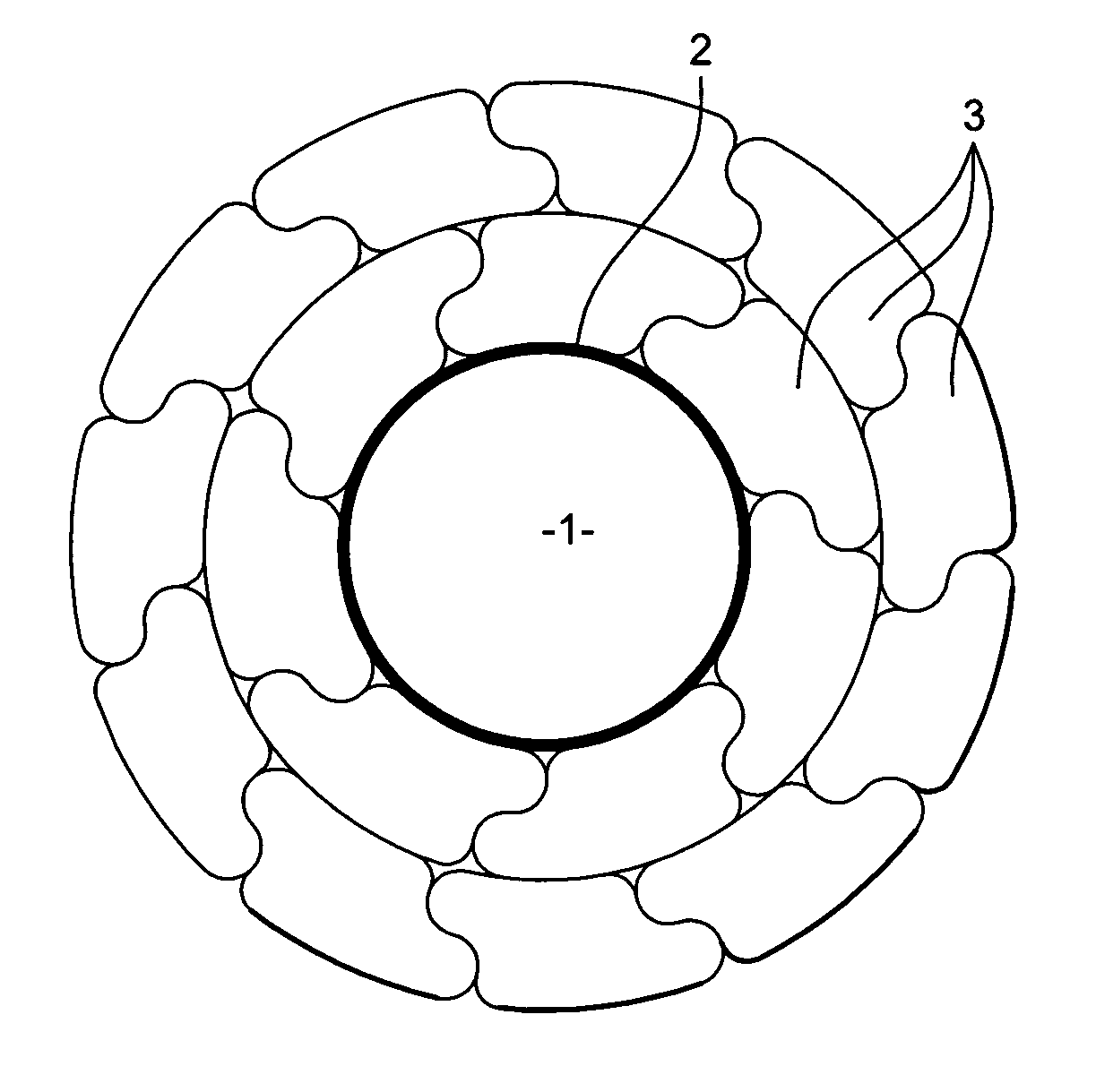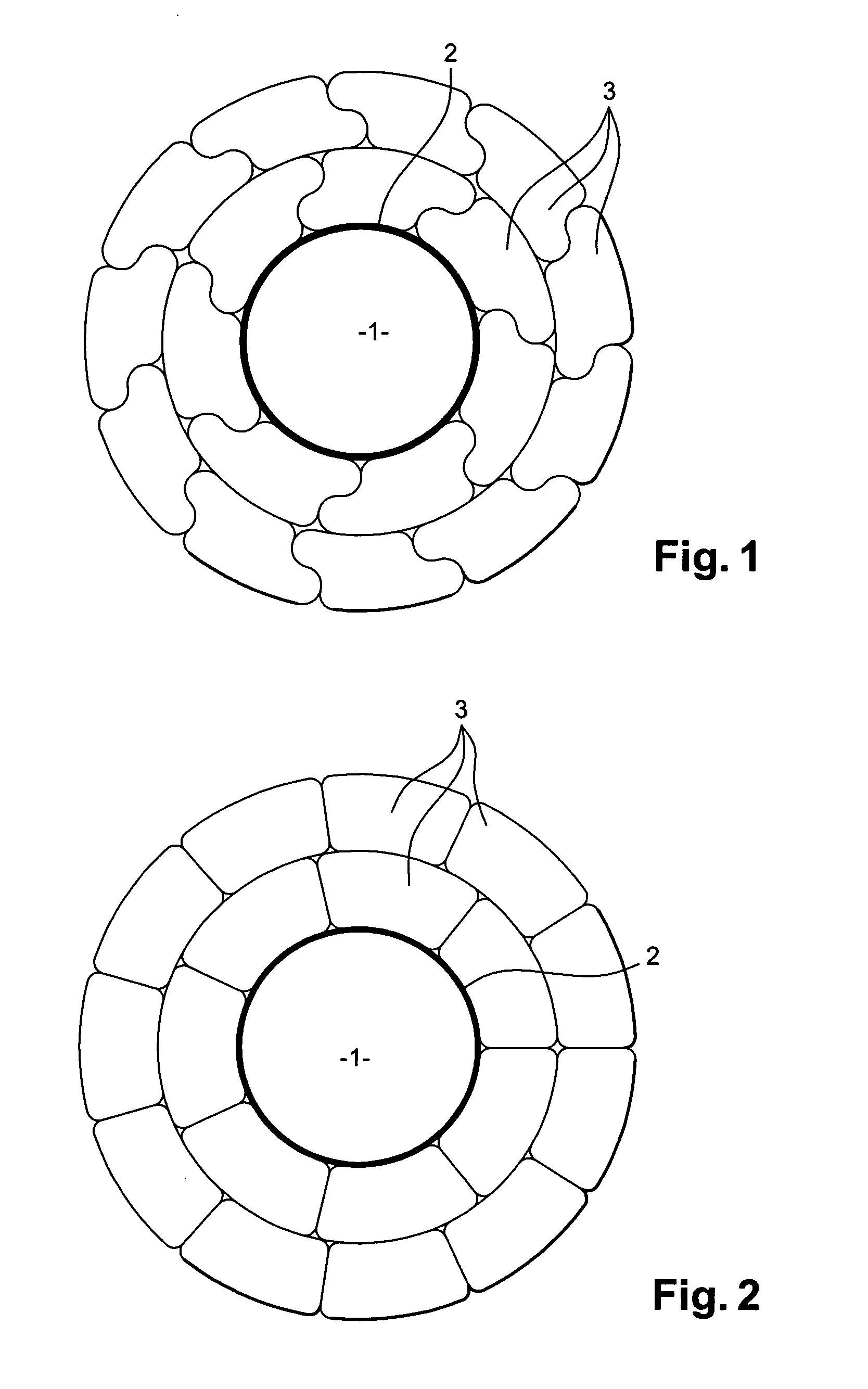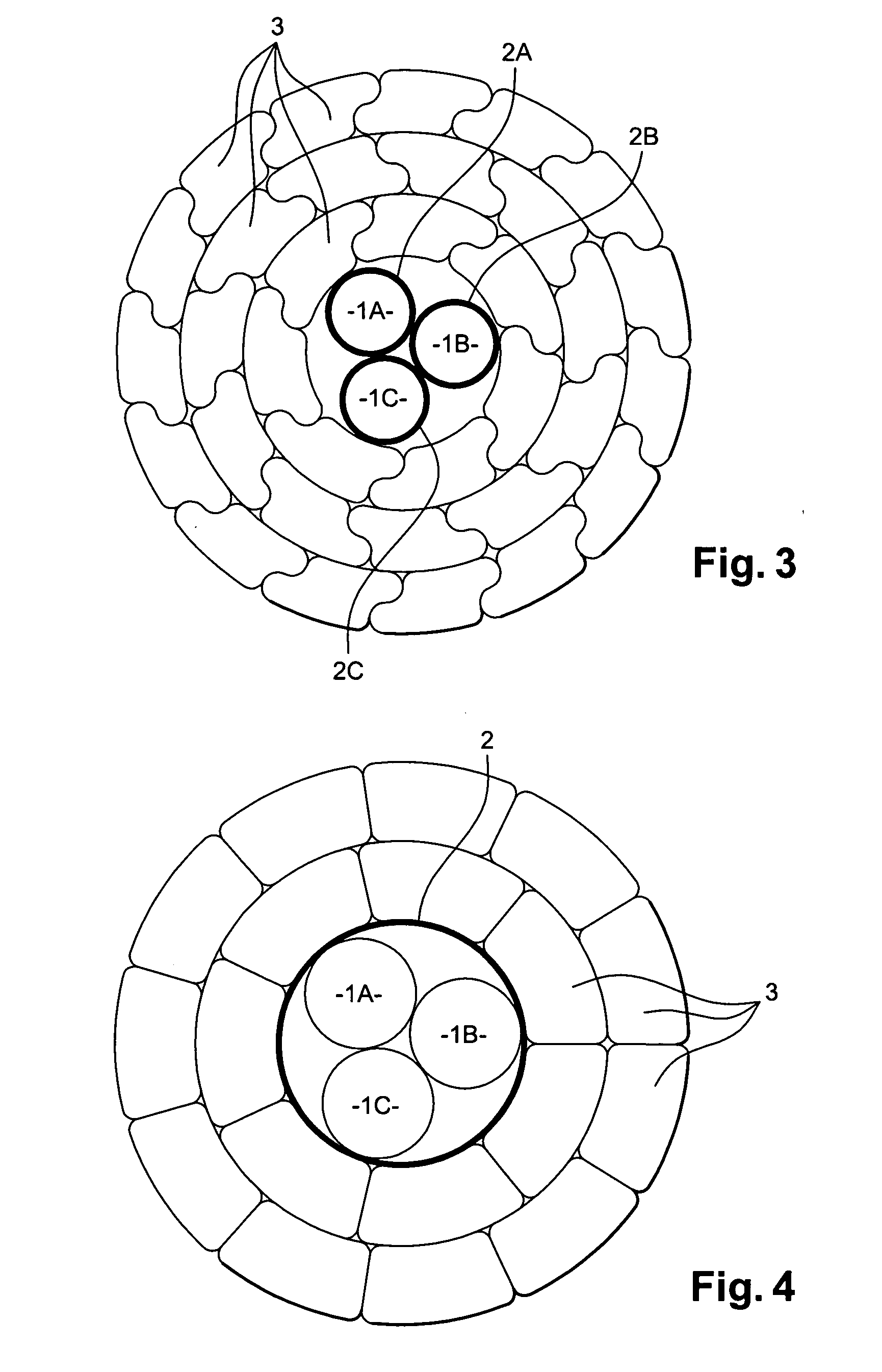Electricity transport conductor for overhead lines
a technology of electric transport conductor and overhead line, which is applied in the direction of power cables, conductive materials, conductive materials, etc., can solve the problems of deterioration, degraded epoxy resin of the core, and inability to obtain electric cables
- Summary
- Abstract
- Description
- Claims
- Application Information
AI Technical Summary
Benefits of technology
Problems solved by technology
Method used
Image
Examples
Embodiment Construction
[0029] These figures show an electricity transport conductor, in particular for overhead power lines presenting an operating temperature that is greater than or equal to 200° C. The conductor comprises at least one composite central core 1 made up of fibers, preferably continuous filaments of carbon fibers, impregnated by a matrix of thermosetting resin, preferably epoxy resin, the core being covered in a layer of insulating material 2, and by conductor wires of aluminum or aluminum alloy 3 that are wound around the core.
[0030] By using a pultrusion method, the continuous fibers are impregnated with resin, and then the resulting core is subjected to heat treatment with its temperature being raised continuously.
[0031] Such a core providing mechanical reinforcement has the advantages of presenting specific weight that is low, and of accepting mechanical stresses that are high.
[0032] The core constituted by a plurality of continuous carbon fiber filaments that are assembled together...
PUM
| Property | Measurement | Unit |
|---|---|---|
| operating temperature | aaaaa | aaaaa |
| temperature | aaaaa | aaaaa |
| temperature | aaaaa | aaaaa |
Abstract
Description
Claims
Application Information
 Login to View More
Login to View More - R&D
- Intellectual Property
- Life Sciences
- Materials
- Tech Scout
- Unparalleled Data Quality
- Higher Quality Content
- 60% Fewer Hallucinations
Browse by: Latest US Patents, China's latest patents, Technical Efficacy Thesaurus, Application Domain, Technology Topic, Popular Technical Reports.
© 2025 PatSnap. All rights reserved.Legal|Privacy policy|Modern Slavery Act Transparency Statement|Sitemap|About US| Contact US: help@patsnap.com



